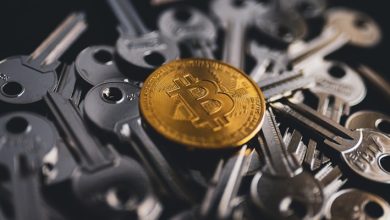Getting Acquainted with Crypto Mining

- Understanding the Basics of Crypto Mining
- Exploring the World of Digital Currency Mining
- The Ins and Outs of Setting Up a Mining Rig
- Maximizing Your Profits through Cryptocurrency Mining
- Key Considerations for Successful Crypto Mining
- Navigating the Challenges of Mining in the Digital Age
Understanding the Basics of Crypto Mining
Crypto mining is the process of validating transactions on a blockchain network using computational power. Miners solve complex mathematical problems to add new blocks to the blockchain, securing the network and earning rewards in the form of cryptocurrency. To understand the basics of crypto mining, it is essential to grasp the key concepts involved in this process.
One crucial aspect of crypto mining is the use of specialized hardware, such as ASIC (Application-Specific Integrated Circuit) miners or GPUs (Graphics Processing Units), to perform the necessary calculations efficiently. These devices are designed to handle the computational requirements of mining and maximize mining profitability. Additionally, miners need access to reliable internet connectivity and a suitable mining software to manage their mining operations effectively.
Another important consideration in crypto mining is the concept of mining pools, where miners combine their computational resources to increase their chances of successfully mining a block and receiving rewards. By joining a mining pool, miners can share their rewards based on the amount of work contributed, providing a more consistent income stream compared to solo mining.
It is also essential to understand the concept of mining difficulty, which adjusts automatically to ensure that new blocks are added to the blockchain at a consistent rate. As more miners join the network, the mining difficulty increases to maintain the block time, making it more challenging to mine new blocks. Miners need to stay informed about the latest developments in mining difficulty to adjust their mining strategies accordingly.
Exploring the World of Digital Currency Mining
Mining digital currencies is a process that involves validating transactions on a blockchain network using powerful computers. This process requires a significant amount of computational power and energy to solve complex mathematical algorithms. By successfully solving these algorithms, miners are rewarded with newly minted coins as well as transaction fees.
There are various cryptocurrencies that can be mined, such as Bitcoin, Ethereum, and Litecoin. Each cryptocurrency has its own mining algorithm and difficulty level, which can impact the profitability and feasibility of mining. It’s important for miners to research and choose the right cryptocurrency to mine based on factors such as hardware capabilities, electricity costs, and market trends.
Miners can choose to mine individually or join mining pools, which allow multiple miners to combine their computational power to increase their chances of successfully mining a block and receiving rewards. Mining pools distribute the rewards among members based on their contribution to the mining process.
The Ins and Outs of Setting Up a Mining Rig
Setting up a mining rig is a crucial step in starting your crypto mining journey. To ensure smooth operation, it’s essential to understand the ins and outs of this process.
Firstly, you will need to choose the right hardware for your mining rig. This includes selecting a powerful graphics processing unit (GPU), a reliable central processing unit (CPU), and sufficient random access memory (RAM). Additionally, you will need a motherboard that can support multiple GPUs for optimal mining performance.
Next, you will need to install mining software on your rig. Popular options include CGMiner, BFGMiner, and NiceHash. These programs allow you to connect your rig to a mining pool, where you can combine your computing power with other miners to increase your chances of earning rewards.
Once your hardware and software are set up, you will need to configure your mining rig for optimal performance. This includes adjusting settings such as power limits, fan speeds, and overclocking parameters to maximize your mining efficiency.
Lastly, you will need to ensure that your mining rig is properly cooled to prevent overheating. This can be achieved by setting up adequate ventilation and cooling systems, as well as regularly cleaning dust and debris from your rig. By following these steps, you can set up a mining rig that is ready to start generating cryptocurrency rewards.
Maximizing Your Profits through Cryptocurrency Mining
When it comes to maximizing your profits through cryptocurrency mining, there are several strategies you can implement to ensure you are making the most out of your mining efforts. One of the key factors to consider is the type of cryptocurrency you are mining. Different cryptocurrencies have varying levels of profitability, so it is essential to research and choose the most profitable ones to mine.
Another crucial aspect to consider is the mining hardware you are using. Investing in high-quality mining hardware can significantly increase your mining efficiency and profitability. Additionally, joining a mining pool can help you maximize your profits by combining your resources with other miners to increase your chances of finding a block and receiving a reward.
Furthermore, staying up to date with the latest trends and developments in the cryptocurrency market can also help you maximize your profits through mining. By understanding market fluctuations and adjusting your mining strategies accordingly, you can take advantage of profitable opportunities and optimize your mining profitability.
Key Considerations for Successful Crypto Mining
When embarking on the journey of crypto mining, there are several key considerations to keep in mind to ensure success. These factors play a crucial role in determining the profitability and efficiency of your mining operation. By carefully evaluating and addressing these considerations, you can maximize your chances of achieving your mining goals.
- Hardware Selection: Choose the right hardware for mining based on the specific cryptocurrency you plan to mine. Consider factors such as hash rate, power consumption, and cost-effectiveness to optimize your mining setup.
- Electricity Costs: Electricity is a significant expense in crypto mining. Be mindful of the electricity rates in your area and consider energy-efficient hardware to reduce costs and improve profitability.
- Cooling and Ventilation: Proper cooling and ventilation are essential to prevent overheating and ensure the longevity of your mining equipment. Invest in adequate cooling solutions to maintain optimal mining conditions.
- Mining Pool Selection: Joining a mining pool can increase your chances of earning rewards by combining computational power with other miners. Research and choose a reputable mining pool with a fair reward distribution system.
- Regulatory Environment: Stay informed about the regulatory environment surrounding cryptocurrency mining in your region. Compliance with regulations is crucial to avoid legal issues and operate your mining operation smoothly.
By carefully considering these factors and making informed decisions, you can set yourself up for success in the world of crypto mining. Remember that the crypto mining landscape is constantly evolving, so staying updated on industry trends and developments is key to maintaining a competitive edge.
Navigating the Challenges of Mining in the Digital Age
Mining in the digital age presents a unique set of challenges that miners must navigate to ensure profitability and sustainability. One of the key challenges is the increasing complexity of mining algorithms, which require more computational power and resources to solve. This complexity can make it difficult for individual miners to compete with larger mining pools, leading to decreased profits.
Another challenge is the volatile nature of cryptocurrency prices, which can fluctuate wildly in a short period of time. Miners must be prepared for these fluctuations and adjust their mining strategies accordingly to maximize their profits. Additionally, regulatory uncertainty surrounding cryptocurrency mining in different countries can pose a risk to miners, as changes in laws and regulations can impact the legality and profitability of mining operations.
Furthermore, the environmental impact of cryptocurrency mining has come under scrutiny in recent years, with concerns about the energy consumption and carbon footprint of mining operations. Miners must take steps to mitigate these environmental impacts, such as using renewable energy sources or more energy-efficient mining hardware.
Overall, navigating the challenges of mining in the digital age requires miners to stay informed about the latest developments in the industry, adapt to changing market conditions, and implement sustainable practices to ensure long-term success. By staying proactive and innovative, miners can overcome these challenges and thrive in the ever-evolving world of cryptocurrency mining.



